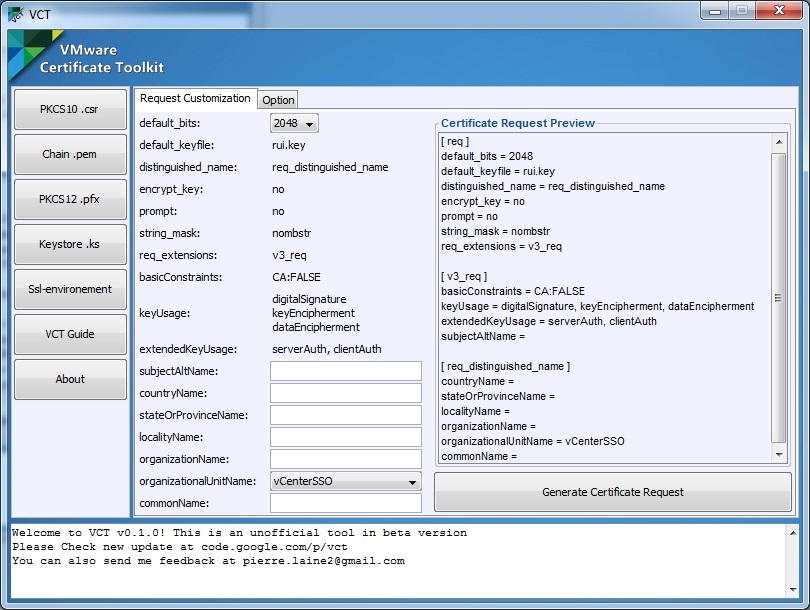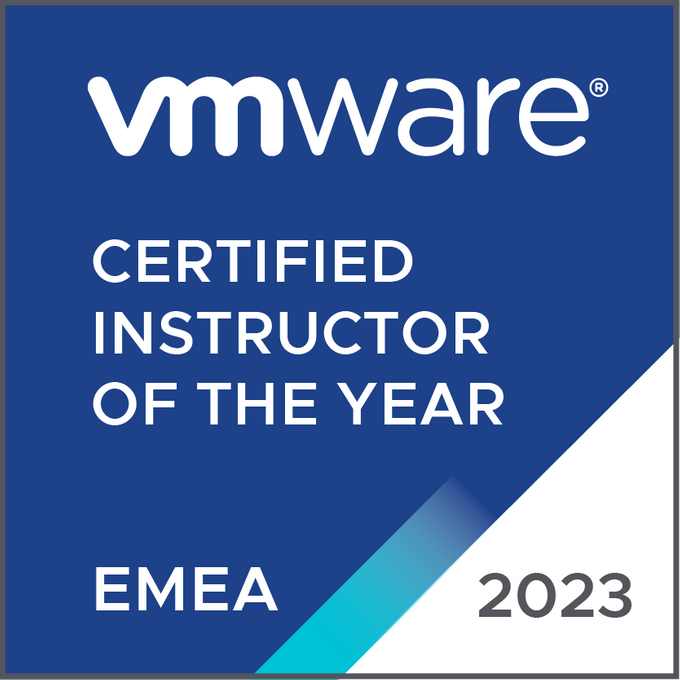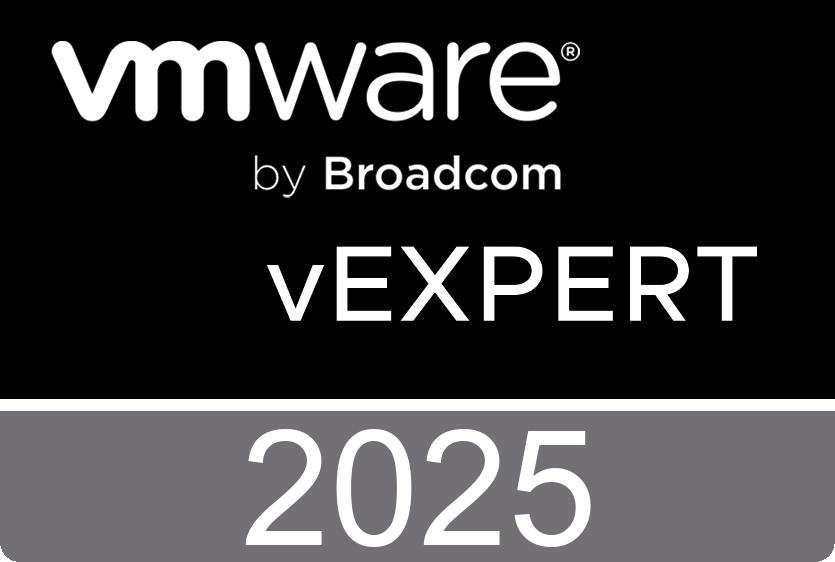Tuesday, September 30. 2014
Running Arista vEOS inside VMware Workstation
Designed to provide a foundation for the business needs of next-generation datacenters and cloud networks. Arista EOS provides extremely robust and reliable data center communication services while delivering security, stability, openness, modularity and extensibility.
This unique combination offers the opportunity to significantly improve the functionality and evolution of next generation data centers. Arista EOS Central (EOSC) offers access to articles, architectures, tips, examples, and support to deliver real-world solutions that bridge the gap between what vendors build and what users want.
Monday, September 29. 2014
VMware Horizon 6 Reference Architecture
This reference architecture provides guidance for implementing a VMware Horizon 6 deployment that supports 2,000 – 10,000 users with an existing server and storage infrastructure. Although hardware is specified for 2,000 users, you can scale the deployment up to 10,000 users using the pod and block architecture approach.
This reference architecture combines the technologies of standard rack mount server hardware running on EMC VNX storage leveraging VMware View Accelerator (to accelerate existing SAN) with VMware ESXi 5.5and Horizon 6 software to produce a highly efficient, robust, and scalable next-generation virtual workspace deployment. This document includes information on View, VMware Mirage 5.0, and VMware Workspace Portal 2.0 running on top of VMware vSphere 5.5.
Sunday, September 28. 2014
Web 2.0 Applications on VMware Virtual SAN
Virtual SAN is a distributed storage product that leverages the combination of SSDs and magnetic disks to provide a hypervisor-integrated, scalable storage solution.
While Virtual SAN achieves impressive I/O performance with micro-benchmarks, Virtual SAN is also capable of performing well with a variety of workloads.
This paper presents the results of experiments with Cloudstone, a Web 2.0 benchmark in vSphere 5.5.
While Virtual SAN achieves impressive I/O performance with micro-benchmarks, Virtual SAN is also capable of performing well with a variety of workloads.
This paper presents the results of experiments with Cloudstone, a Web 2.0 benchmark in vSphere 5.5.
Saturday, September 27. 2014
Free Book - Virtualization 2.0 For Dummies
 Virtualizing your servers was the first step to achieving cost savings, high availability, and greater IT efficiency. But as your business is evolving and growing, your virtualized infrastructure needs to do the same - leading to the next-generation data center running on Virtualization 2.0.
Virtualizing your servers was the first step to achieving cost savings, high availability, and greater IT efficiency. But as your business is evolving and growing, your virtualized infrastructure needs to do the same - leading to the next-generation data center running on Virtualization 2.0.In Virtualization 2.0 For Dummies®, we will explore:
- How Virtualization 2.0 can deliver improved visibility, optimized planning and more predictive control through capacity management and performance monitoring
- A deep dive into virtualization beyond the server, including operations management, virtualized backup, storage, and networking
- How to prepare your IT environment for the next steps in your virtualization journey, with advice on storage options and security
- Technical tips, best practices, and links to in-depth resources to help you save time setting up, managing, and troubleshooting
Friday, September 26. 2014
Getting Started Guide for NSX vSphere
This document provides step-by-step examples that demonstrate how to set up the following network services in NSX for vSphere:
- Logical Switches
- Logical Distributed Router
- Distributed Firewalls
- Logical Centralized Routers (Edge) with Dynamic Routing and with many-to-one NAT
- Logical Load Balancers (Edge)
At the end, you'll have the following logical network deployed in your lab:
Wednesday, September 24. 2014
Cool Tool - VMware Certificate Toolkit
VMware Certificate Toolkit allows VMware admins to generate faster SSL certificates for VMware products. This tool is not based on OpenSSL, it Java cryptographic API to generate VMware supported SSL certificates.

Please don't use this tool in production environment before a Release Candidate version. VCT is available on source forge.
Tuesday, September 23. 2014
The OSV alpha release is now available
 OSv reduces the memory and cpu overhead imposed by a traditional OS. Scheduling is lightweight, the application and the kernel cooperate, and memory pools are shared. OSv provides unparalleled short latencies and constant predictable performance, which translates directly to capex savings by reducing the size and number of OS instances.
OSv reduces the memory and cpu overhead imposed by a traditional OS. Scheduling is lightweight, the application and the kernel cooperate, and memory pools are shared. OSv provides unparalleled short latencies and constant predictable performance, which translates directly to capex savings by reducing the size and number of OS instances.
- Rapid VM build and deploy
- Zero OS Management
- DevOps/PaaS like deployment
- Common Java framework integration
- Optimize your Native apps
- Optimized JVM (coming up)
The following images can be used to download standalone OSv image to use directly with KVM, VirtualBox, or VMware.
OSv with CLI
Monday, September 22. 2014
Latest Fling from VMware Labs - PowerActions for vSphere Web Client
 PowerActions integrates the vSphere Web Client and PowerCLI to provide complex automation solutions from within the standard vSphere management client.
PowerActions integrates the vSphere Web Client and PowerCLI to provide complex automation solutions from within the standard vSphere management client.PowerActions is deployed as a plugin for the vSphere Web Client and will allow you to execute PowerCLI commands and scripts in a vSphere Web Client integrated Powershell console.
Furthermore, administrators will be able to enhance the native WebClient capabilities with actions and reports backed by PowerCLI scripts persisted on the vSphere Web Client. Have you ever wanted to “Right Click” an object in the web client and run a PowerCLI script? Now you can!
For example I as an Administrator will be able to define a new action for the VM objects presented in the Web client, describe/back this action with a PowerCLI script, save it in a script repository within the Web client and later re-use the newly defined action straight from the VM object context (right click) menu.
Or, I as an Administrator can create a PowerCLI script that reports all VMs within a Data Center that have snapshots over 30 days old, save it in a script repository within the Web client and later execute this report straight from the Datacenter object context menu.
Or better yet, why not share your pre-written scripts with the rest of the vSphere admins in your environment by simply adjusting them to the correct format and adding them to the shared script folder.
New VMware Fling: Introducing PowerActions for vSphere Web Client
Download PowerActions
New VMware Fling: Introducing PowerActions for vSphere Web Client
Download PowerActions
VMware EVO:RAIL demo
VMware EVO: RAIL combines compute, networking, and storage resources into a hyper-converged infrastructure appliance to create a simple, easy to deploy, all-in-one solution offered by VMware qualified partners.
Technical White Paper for Download: Introduction to VMware EVO: RAIL
Friday, September 19. 2014
NSX Design Guide v2.1
IT organizations have gained significant benefits as a direct result of server virtualization. Server consolidation reduced
physical complexity, increased operational efficiency, and the ability to dynamically re-purpose underlying resources to
quickly and optimally meet the needs of increasingly dynamic business applications are just a handful of the gains that
have already been realized.
Now, VMware’s Software Defined Data Center (SDDC) architecture is extending virtualization technologies across the entire physical data center infrastructure. VMware NSX, the network virtualization platform, is a key product in the SDDC architecture. With VMware NSX, virtualization now delivers for networking what it has already delivered for compute and storage.

In much the same way that server virtualization programmatically creates, snapshots, deletes and restores software-based virtual machines (VMs), VMware NSX network virtualization programmatically creates, snapshots, deletes, and restores software-based virtual networks.
The result is a completely transformative approach to networking that not only enables data center managers to achieve orders of magnitude better agility and economics, but also allows for a vastly simplified operational model for the underlying physical network.
With the ability to be deployed on any IP network, including both existing traditional networking models and next generation fabric architectures from any vendor, NSX is a completely non-disruptive solution. In fact, with NSX, the physical network infrastructure you already have is all you need to deploy a software-defined data center.
Now, VMware’s Software Defined Data Center (SDDC) architecture is extending virtualization technologies across the entire physical data center infrastructure. VMware NSX, the network virtualization platform, is a key product in the SDDC architecture. With VMware NSX, virtualization now delivers for networking what it has already delivered for compute and storage.

In much the same way that server virtualization programmatically creates, snapshots, deletes and restores software-based virtual machines (VMs), VMware NSX network virtualization programmatically creates, snapshots, deletes, and restores software-based virtual networks.
The result is a completely transformative approach to networking that not only enables data center managers to achieve orders of magnitude better agility and economics, but also allows for a vastly simplified operational model for the underlying physical network.
With the ability to be deployed on any IP network, including both existing traditional networking models and next generation fabric architectures from any vendor, NSX is a completely non-disruptive solution. In fact, with NSX, the physical network infrastructure you already have is all you need to deploy a software-defined data center.
This document is targeted toward virtualization and network architects interested in deploying VMware® NSX network virtualization solution in a vSphere environment.





